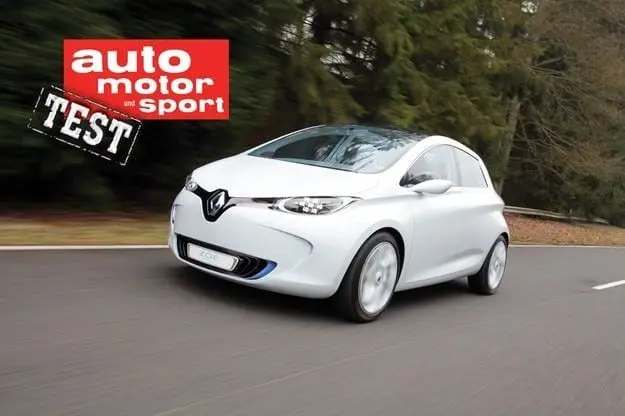
Test drive Renault ZOE: Free electron

Renault intends to produce four electric vehicles by the end of 2012, but now Auto Motor und Sport has the opportunity to appreciate the qualities of the compact Zoe.
The front cover length could have been shorter because the Zoe's electric motor requires significantly less space than a comparable combustion engine. However, the team of the chief designer of the project, Axel Braun, deliberately refrained from creating too non-standard in form and "green" appearance of the car. According to him, “the transition from internal combustion engines to electric traction itself requires a lot of courage,” and the design does not require additional testing for potential customers.
The seating position and spaciousness of the 4,09 meter Zoe is also in line with what one would expect from a modern compact class. The individual seat upholstery is quite thin, but their anatomical layout allows four adult passengers to travel comfortably. With a minimum volume of almost 300 liters, the trunk of an electric car holds about the same as that of the Clio.
What the numbers say
There are no surprises in terms of management. After pressing the start button, all you need to do is select the "D" position on the center console control unit and press the right of the two pedals to start. Power 82 hp and a maximum torque of 222 Nm are available from the outset, resulting in a prototype that behaves quite briskly. According to the plans of French engineers, acceleration from 0 to 100 km / h in the production version, due in 2012, should be carried out in eight seconds - a good prerequisite for a successful combination of driving pleasure and responsible attitude towards the environment.
The prototype's maximum speed limit is intentionally set at 135 km/h, as from that point on, energy consumption starts to increase disproportionately with increasing pace. For the same reason, the production version of Zoe will lose the glass panoramic roof. “Additional glazing means extra body heat, and a sufficiently energy-intensive air conditioner in electric vehicles should run as infrequently as possible,” Brown said. After all, Renault promises that the production Zoe will travel 160 kilometers on a single battery charge.
Full to empty
To minimize the time-consuming process of charging lithium-ion cells, Renault engineers provided Zoe with a fast battery swap scheme similar to that used in the electric E-Fluence (also introduced to the market in 2012). In countries with built-in station infrastructure, for this operation, the owner will be able to replace discharged batteries with new ones in just a few minutes. Initially, a network of such stations is supposed to be built in Israel, Denmark and France.
French consumers will get another privilege. Thanks to a generous government subsidy, a serial Zoe in the country of males will cost only 15 euros, while in Germany and probably other European countries it will cost at least 000 euros, to which will be added about 20 euros per month. for the rental of battery cells, which always remain the property of the manufacturer. It is obvious that the pioneers among consumers of serial electric vehicles, in addition to courage, will also need serious financial reserves.
Text: Dirk Gulde
a photo: Karl-Heinz Augustine